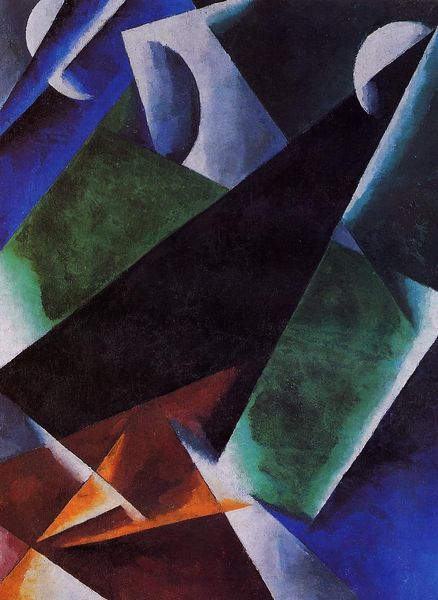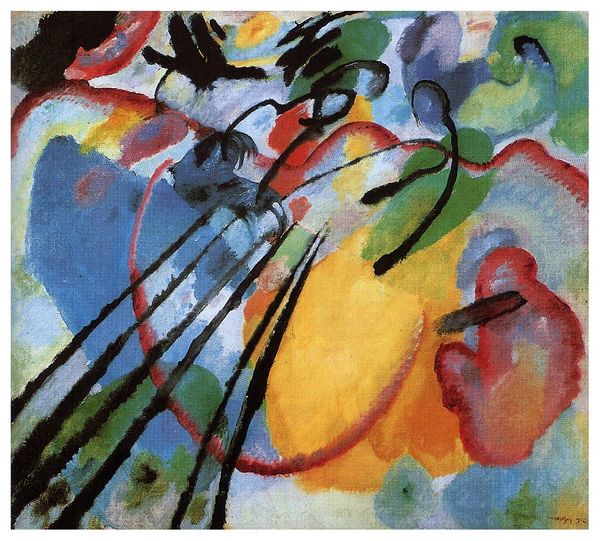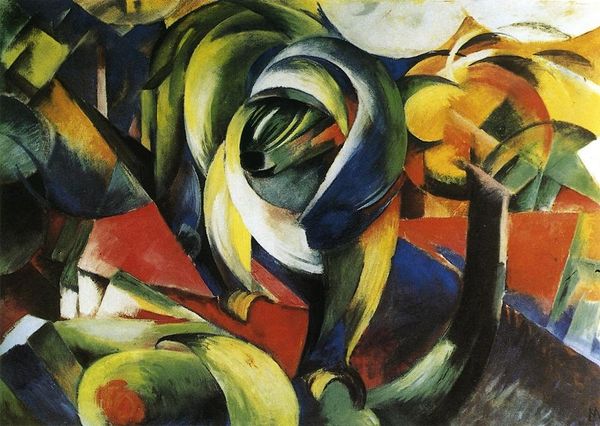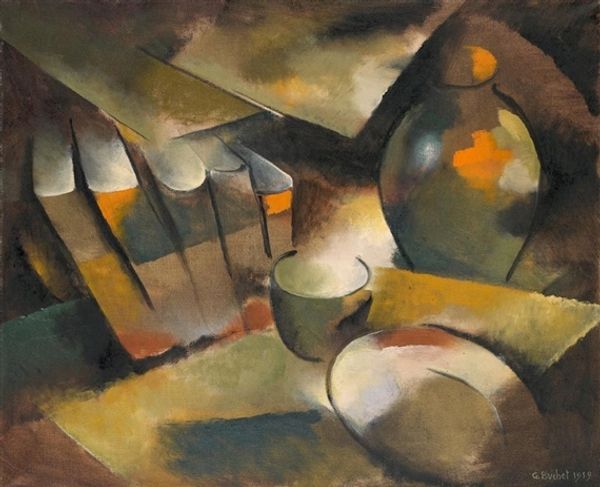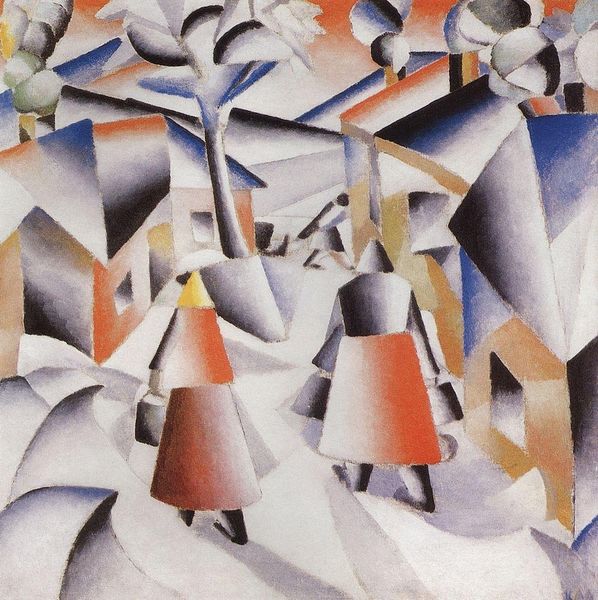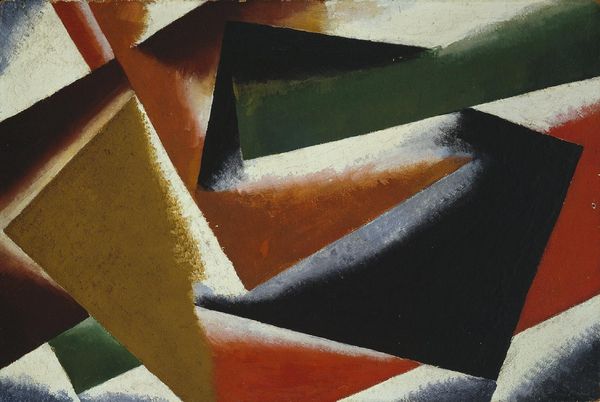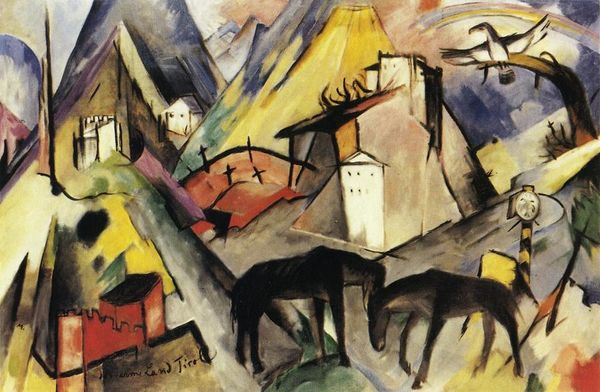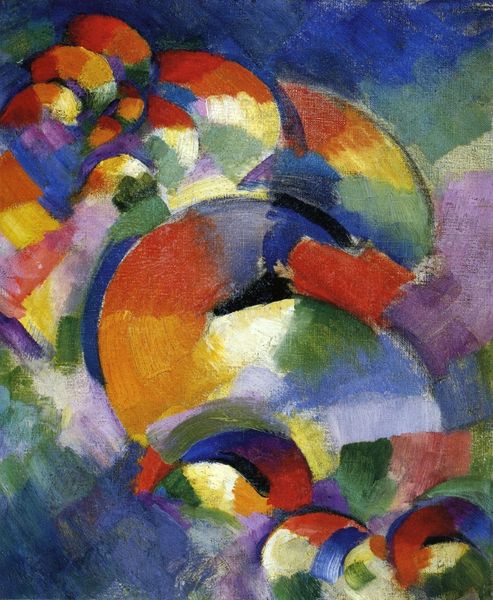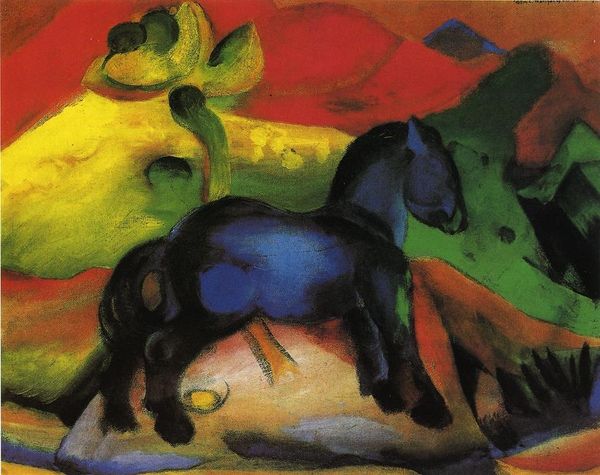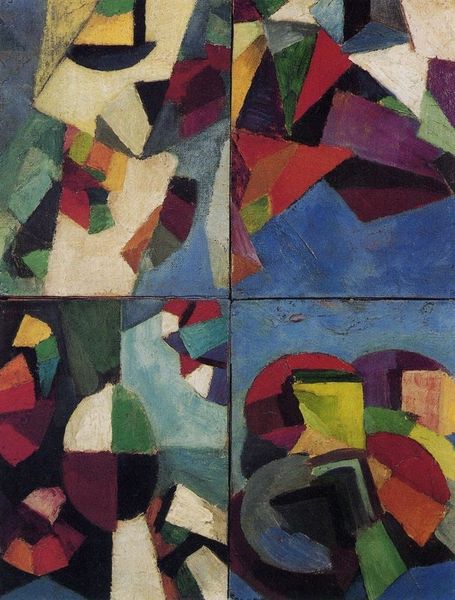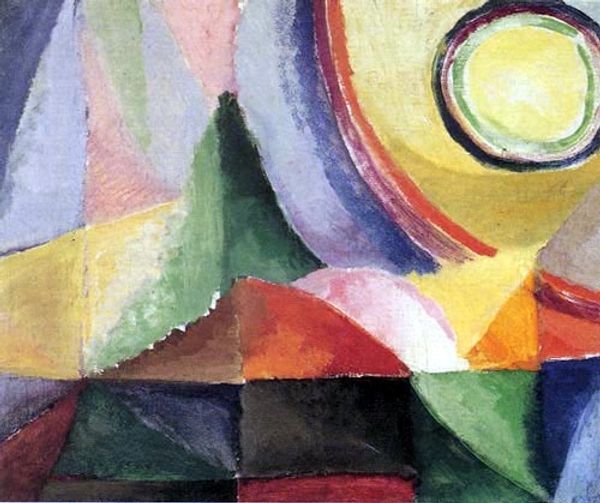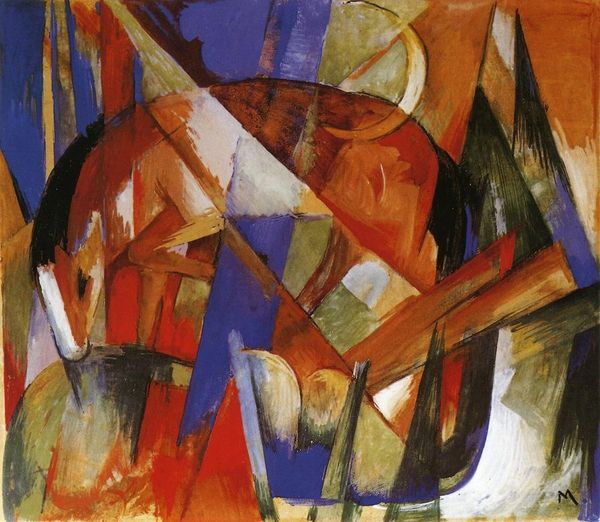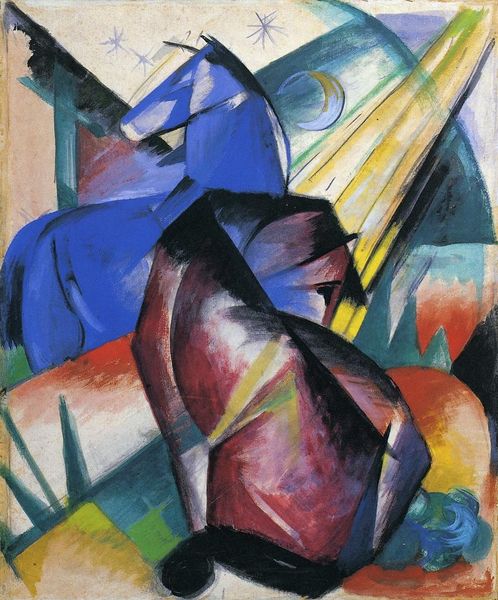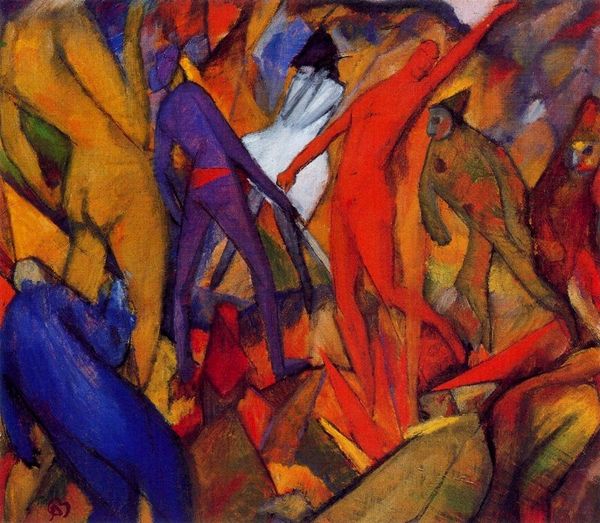
painting, oil-paint
#
painting
#
oil-paint
#
landscape
#
oil painting
#
neo expressionist
#
geometric
#
expressionism
#
abstraction
Dimensions: 79.5 x 100 cm
Copyright: Public domain
Curator: Here we have Franz Marc's "Haystacks in the Snow," painted in 1911 using oil paint. Editor: My first thought is how strikingly un-wintery it feels. The vibrant red, yellow, and green are oddly cheering for a snow scene, it almost feels like a bizarre abstract rainbow under a fresh snow blanket. Curator: Indeed, the composition demonstrates an interesting tension between abstraction and representation. Marc simplifies the forms of the haystacks into geometric shapes. I think it moves past traditional landscape art in some radical ways, it speaks to a wider impulse to break with tradition. Editor: There's also a peculiar intimacy here, wouldn’t you say? We're pulled right up close to the haystacks, the looming shapes almost fill the entire field of vision. I love how Marc coaxes such boldness out of, let’s face it, fairly mundane subjects. Haystacks! I almost think, if I painted that, I'd aim for cozy, pastoral charm, and the result might feel very lifeless by comparison. Curator: Marc's choice of these rather unorthodox colors also demands attention; considering Expressionism’s engagement with emotional intensity and challenging traditional norms of production and reception, how might the color scheme influence the interpretation of the art object? Is there something implicitly confrontational in using a color like yellow when painting something supposedly 'wintery'? Editor: Exactly! Maybe he wanted to reflect on the hidden vitality beneath a landscape subdued by frost and cold; these stacks burst with life as you observe it, which invites the eye into a journey beyond winter dormancy into anticipation of growth; like those spring wildflowers emerging from unexpected places. The contrast in visual themes is striking, and not accidental. Curator: It brings a whole new dimension to our understanding of agrarian landscapes. The painting reflects how artistic production during the period negotiated industrial expansion, ecological concerns, and the tension between high art and folk practices, all in this humble arrangement of the rural. Editor: Right. I appreciate seeing those ideas sparked in something so simple and direct, and as our tour continues, hopefully those new thoughts can shape our perspective, too. Curator: Indeed. A fruitful experience I would agree.
Comments
No comments
Be the first to comment and join the conversation on the ultimate creative platform.
